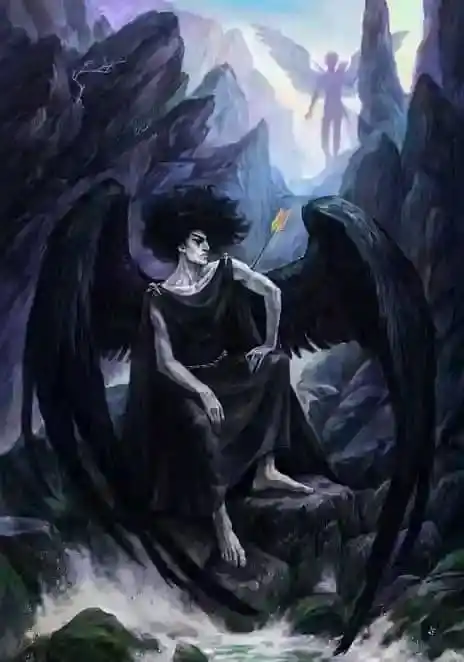
TMB ART & MYTHICAL WORLD
February 13, 2025 at 07:46 PM
THANATOS
Thanatos is the Greek personification of death, a primordial deity who represents the peaceful passing of life. Unlike Hades, the ruler of the Underworld, Thanatos is not a god of the dead but rather the very embodiment of death itself—a silent, inevitable force. In contrast to the violent deaths brought by the warlike Keres (spirits of doom and slaughter), Thanatos is associated with a gentle, non-violent passing, making him a more neutral or even merciful figure in Greek mythology.
Thanatos is the son of Nyx (Night) and the twin brother of Hypnos (Sleep). Born from the darkness of Nyx, he is deeply connected to the cycle of life and the passage into the afterlife. His twin brother Hypnos symbolizes rest and dreams, reinforcing the ancient Greek idea that sleep and death are closely linked—death being the eternal sleep from which one does not wake.
Thanatos is also sometimes linked to Charon, the ferryman, who guides souls across the River Styx into the Underworld, and to Hermes, who escorts the dead as Hermes Psychopompos (Guide of Souls).
In Greek art and literature, Thanatos is often portrayed as a winged youth carrying a sword or an extinguished torch, symbolizing the snuffing out of life. He is typically calm and solemn, unlike the terrifying Keres, who bring death through battle and bloodshed.
Though Thanatos does not feature in many major myths, one of his most famous appearances is in the story of Sisyphus, the cunning king of Corinth.
Sisyphus, known for his trickery, once cheated death by capturing and imprisoning Thanatos with chains. With Thanatos bound, no one in the world could die, creating chaos as warriors and the sick lingered indefinitely. Eventually, Ares, the god of war, grew frustrated that no one was dying in battle, so he freed Thanatos, allowing death to resume.
When Sisyphus did eventually die, he tricked the gods once again by convincing Hades to let him return to the mortal world. However, he was later captured and sentenced to his infamous eternal punishment—rolling a boulder up a hill for eternity.
Though Thanatos was feared, he was not entirely a negative figure—he represented the natural order of life and death. In later Roman mythology, he was associated with Mors, the Roman god of death. Over time, his imagery influenced later cultural depictions of death, including the Grim Reaper of medieval and modern times.
Unlike Hades, who rules over the dead, Thanatos is a cosmic force—death itself, impartial and inevitable. He does not choose when or how people die but simply guides them beyond life’s threshold. While he was feared in antiquity, he was also seen as necessary, a reminder that life and death are two sides of the same coin.
